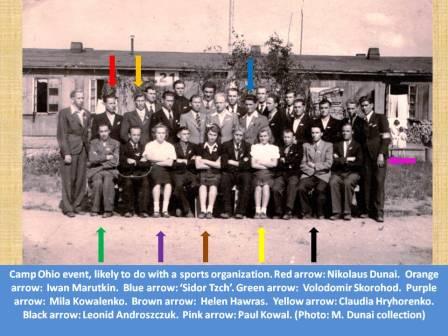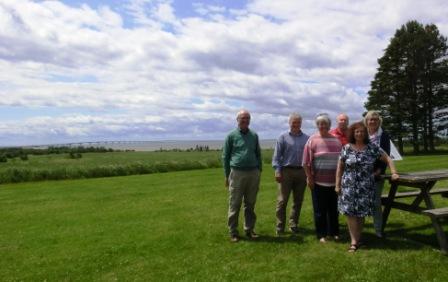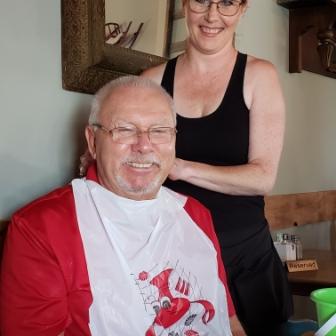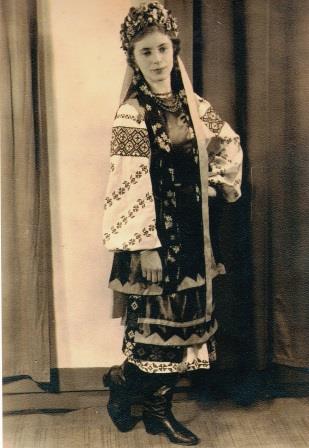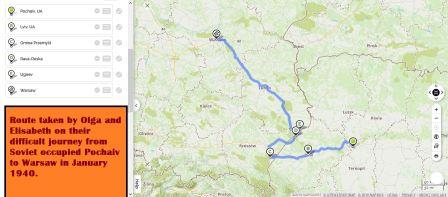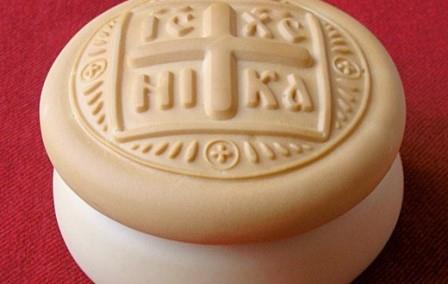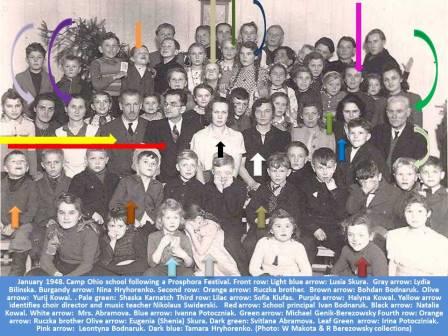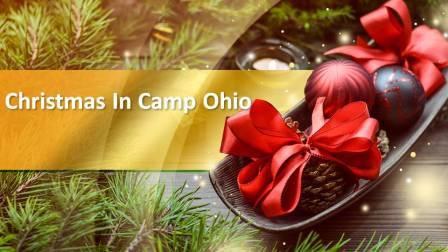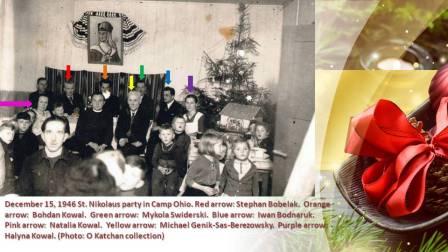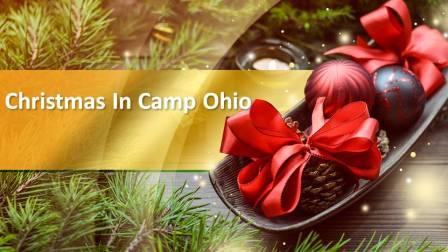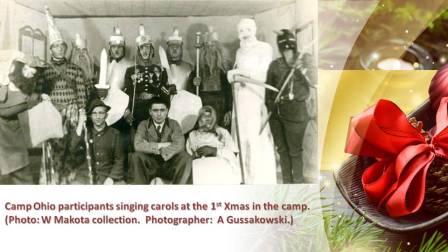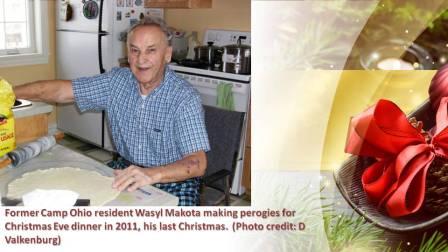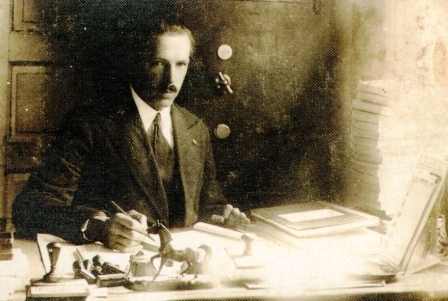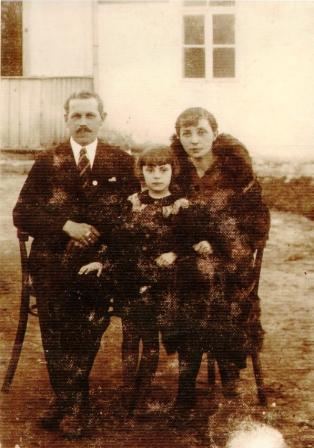
January 27, 2023. Saying goodbye to a Camp Ohio resident is extremely difficult. There was a great deal of sadness in our home when we learned that Olga SWIDERSKI KATCHAN had passed away in Perth, Australia on January 23, 2023.
Born in Pochaiv, Ukraine on July 23, 1928, Olga lived in Camp Ohio with her father, Mykola SWIDERSKI, and her future husband, Arkadi KATCHAN (who died in 1982), until they immigrated to Australia.
Olga’s son, George Katchan, wrote “…I am very sorry to announce that my mother, Olga Katchan, died last Monday afternoon here in Perth. She died quite peacefully and I was with her at the time. We are planning to fly her to Sydney where she will be buried in our family plot with other family members….”
….Olga was a treasured resource…
Over the past years, Olga was a treasured resource – generous in sharing her knowledge to help clarify events, unlock the terminology of acronyms, and to lend a hand with phrases that were difficult to translate. She shared her photos and did her best to help with the identification of many photos that were received over the years. If Olga didn’t know the answer, she almost always knew someone who could help…. and no one ever refused to provide assistance with this research project if Olga requested it.
In addition to Olga being a Camp Ohio resident and a resource for this research project, she knew my late father, Wasyl MAKOTA. Had he still been alive, how he would have loved to have spoken to her after so many decades!
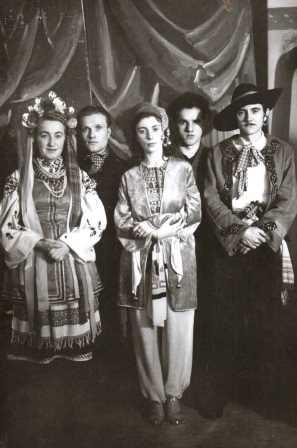
1947 Masked Ball at Camp Colorado. (Photo courtesy of W. Makota and O. Katchan collections)
Olga sent me a photo, which I had also found amongst my father’s photos, but had no idea where the photo was taken, why, and who was in the photo. Olga unlocked the mystery, explaining that “…the photo was taken in 1947 in Camp Colorado at a masked ball. From right to left: Arkadi (we were not married yet), your Dad, myself, an unknown person who was possibly a friend of your Dad, and Natasha Holubtsov. Your Dad was responsible for getting us there in his lorry. Since our mutual friend Tanya lived in Colorado, we could change in her room and did not have to worry about travelling in fancy dress. Arkadi and your Dad were great pals, because your Dad taught him to drive…”
….Some of Olga’s photos from Camp Ohio and journey to Australia…
Here is a very brief trip down memory lane featuring some of the photos that Olga shared…
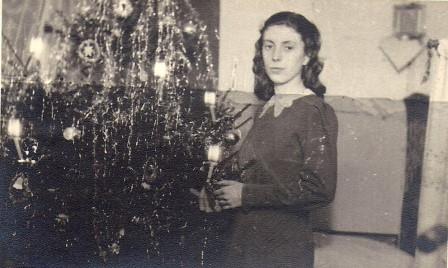
Camp Ohio Christmas. Olga with her Christmas tree. (Photo courtesy of O. Katchan collection)
Olga recalled that “…I always insisted on having a tree in my room in the barracks. I shared the room with my Dad…”

Aboard the ship ‘General Harry Taylor’ enroute to a new life in Australia. (Photo courtesy of O. Katchan collection)
After leaving Camp Ohio, Olga immigrated to Australia, along with her father, husband Arkadi, and his parents. When Olga sent this photo, she explained that it was “…on board ‘General Harry Taylor’ sailing to Australia. From left to right: Vera Katchan, Arkadi Katchan, Olga Katchan, Wala Kiltschewskij (already expecting Olga, who was to be my goddaughter)….”
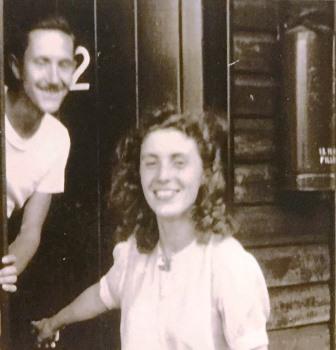
Arkadi and Olga Katchan at Greta Camp. (Photo courtesy of O. Katchan collection)
After arriving in Australia, Olga and her family were sent to Greta Camp, located west of Newcastle, New South Wales, in the Hunter Valley, not far from Maitland, a large town where many of the immigrants later settled.
Olga explained that “…We were the last to disembark as both Arkadi and I were asked to work as interpreters for the customs officers who screened everybody before allowing them to step on Australian soil.
The Camp had two sections: A Reception centre, called Silver City, and a Holding Centre called Chocolate City, (or Mums and Bubs). We all had to sign a contract to work for 2 years where needed by the government. The dependents would stay in Chocolate City until the working members found a home for them. In our case, Arkadi and I worked in Sydney, while his parents stayed in Chocolate City. My Father went to live with my brother Nick and his wife Halina in Sydney….”
….Olga became a Senior Lecturer in Psychology at the University of Sydney…
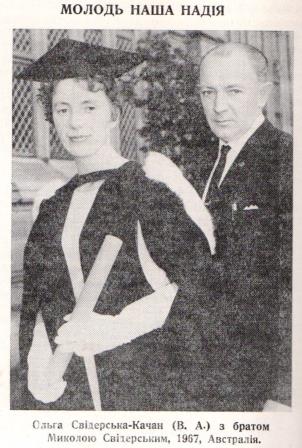
Newspaper graduation photo of Olga, with her brother Nicholas Swiderski. (Newspaper photo courtesy of O. Katchan collection)
In 1966, Olga graduated from the University of Sydney with a BA with First Class Honours in Psychology, receiving her Masters degree in 1972. She began as a tutor in psychology in 1966, becoming, in 1988, Senior Lecturer in the Department of Psychology at the University of Sydney in Australia.

Olga (right) at the 27th Jean Arnot Memorial Luncheon in May 2019. (Photo courtesy of O. Katchan collection)
In May 2019, Olga was honoured with a Certificate of Appreciation at the 27th Jean Arnot Memorial Luncheon in Sydney for her contribution to the advancement of women and service to the community.
….Olga shared her family’s story…
Olga shared her story, and that of her father, Mykola Swiderski, for this blog, ensuring that their stories will not be forgotten. I only wish we could have met in person. Our deepest condolences go to Olga’s family and friends.
For a link to Olga’s story, please see https://dpcampohioresearchproject.wordpress.com/2019/03/08/camp-ohio-resident-olga-swiderski-katchans-escape-from-paradise/
For a link to Mykola Swiderski’s story, please see https://dpcampohioresearchproject.wordpress.com/2018/06/30/camp-ohio-resident-mykola-swiderski/
….A last Christmas photo…
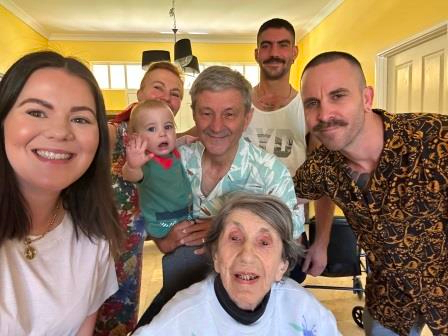
Olga with her son George (centre), and family. (Photo courtesy of George Katchan)
I asked Olga’s son George if he had a photo of Olga he wished to share. He did, explaining, that the photo was of “… mum at Christmas time with her Perth family (son, grandson/granddaughter & great grandson)….”
When I wrote Berlin historian Ralf Gräfenstein to let him know of Olga’s passing, his response best summed up how my husband Pieter and I felt. “…I am filled with sorrow that she passed away in her 95th year of life. She knew so much and had such an eventful life. I often thought of her and I was always happy to exchange with her via email and regret that I never got to talk (also in German) with her. With Olga, a contemporary witness and protagonist of almost a century – of war, expulsion, new beginnings and reconstruction, science, and research is leaving us. She will always remain in my good memory….”
Thank you to Olga’s son George for taking the time to contact us. Do you have a memory or photo of Olga Swiderski Katchan to share? Comments can be made on this blog or by sending an email to dariadv@yahoo.ca.
© Daria Valkenburg
